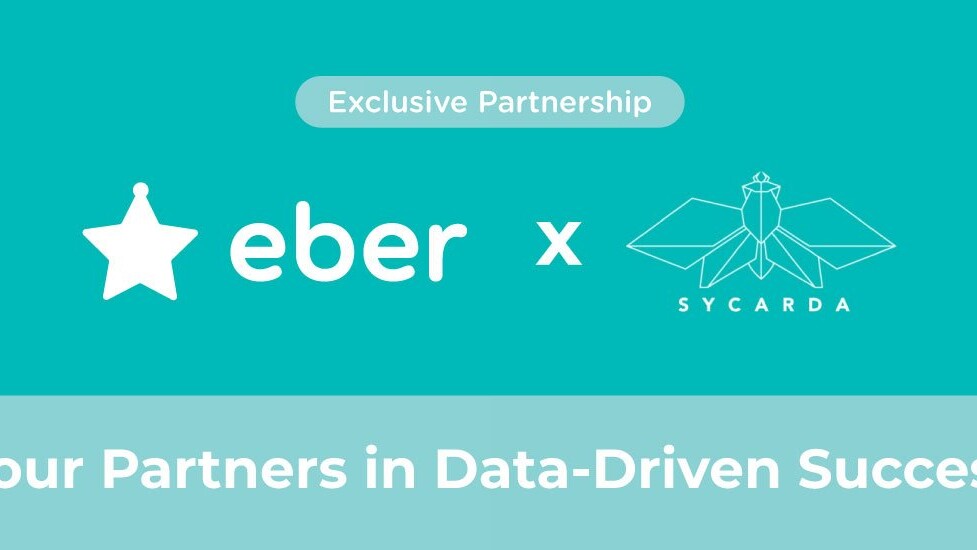Data storytelling is the process of translating analysed data into interpretable terms in order to influence a business decision or action. It aims to go beyond presenting data in a dry, factual manner, to make it more relatable and meaningful. The goal is to inspire action or drive change based on the insights and messages conveyed through the data story. Data analysis, on the other hand, is the curating of valuable insights from data to give further understanding to pieces of data.


Nowadays, obtaining your business’ data isn’t as complicated as it used to be. After all, with the vast range of digital software and mediums we use in our businesses, all sorts of data are stored- it’s really just a matter of extracting the right data and knowing how to turn them into meaningful insights.
Let us paint you a picture. Your pre-existing tools could easily show you that your café has sold 3x more coffees this month compared to the previous month. This data could be presented to you in well-organised charts, but what you cannot see is the narrative behind why this has happened.
Put, your data spreadsheets may only be able to tell you the extent of what has happened, but the “why” remains unanswered.
With the help of business analytics and data storytelling, you can easily differentiate useful data from the ones that aren’t. By using a data visualisation tool like SYCARDA Malaysia, you will have all your important business insights handed to you on a single platform. This data will be displayed in easily interpretable visual formats, on a dashboard that can be accessed at any time, anywhere.
Data Storytelling: Why Is It Important?
Prior to your understanding of the importance of data storytelling, you need to understand the roles of its 3 different elements: Data, Visuals and Narrative.
The Data tells you WHAT has already happened, the Visuals show you WHEN things happen over a period of time and the Narrative explains WHY certain events happen.


When you combine these three elements — comprehensive data, appropriate visuals, and a powerful narrative — your data can tell you a rather illuminating story that could be highly influential and lead to a drive for change. The actionable insights derived from these decision-makers may be able to foster improvements within your business which would make business targets more achievable in the long run.
All in all, data storytelling is especially crucial for aiding a business in reaching its full potential. It ensures that your team understands the insights gained from your data while simultaneously interpreting patterns, so you can strategise the best course of action for your business moving forward.
Boost Your Sales Forecast Accuracy by Understanding Your Data
Every business owner aims to have their business perform well while responding quickly to shifts in consumer behaviour and market trends. However, these factors heavily rely on accurately forecasting your sales.
Your sales forecast has an effect on every aspect of your business. It determines how much you should invest in growth when is considered the right time to cut costs and helps you make the right calls when deciding what to do next. In short, the more accurate your sales forecast, the smarter the decisions you’ll make — which allows your business to thrive under any circumstance. Unfortunately, many marketers and business owners still rely on simple spreadsheet data and gut feeling when it comes to sales forecasting. These methods of estimation are not the most reliable as they do not contain any supporting evidence and often lead to miscalculated guesses.
So how can you boost your sales forecast accuracy? The answer lies within your data.
What most marketers and business owners don’t understand is that the key to creating a precise forecast depends on whether you are collecting the right data. Big data analytics can provide a more accurate and comprehensive view of sales trends and customer behavior, enabling businesses to make better-informed decisions about forecasting, inventory management, and marketing.


When supported with the right sales insight tools, you can easily identify specific patterns and trends in your data sets that are relevant to your business. This ties back in with data storytelling, where you can build a story based on these segments of data, rationalising certain patterns, and be able to create an accurate forecast for your business.
Fortunately, there are a number of data analytics software available today, that can aid you in doing just that. The combination of proper data collection, detailed statistics and machine learning from a powerful data analytics software like that of our company – SYCARDA Malaysia – can provide you with relevant insights, in turn giving you the power to generate the right actions.
These insights are the key in creating an accurate data-driven forecast that can form new strategies aligning your business processes with your business goals, ultimately propelling your business further into its market and staying ahead of your competitors.
So, if you want to be more intuitive with your forecasting, it is due time to get more in tune with your business needs and start using the right data visualisation tools.
What can you use data for?
Consumption trends are everchanging and have especially shifted in recent years. As a result, customer expectations towards brands have changed drastically. Business owners ought to take up the responsibility of investigating the new preferences of their target markets in order to stay relevant. This initiative can be implemented by analysing the data a company collects, whether it may be garnered from POS systems or simply from tracking inventory levels.
Not too long ago, it would have been a shock that businesses could have access to these insights. However, with the help of technological advancements, it is now more than possible for companies to collect various data points within their customer footprint. Data-driven decision-making is one of the most active ingredients in making a successful business plan, and with the immense availability of collectable information today, there is no excuse as to why a business cannot be proactive in anticipating its consumers’ needs.
How Data Analytics Can Improve Decision-Making and Internal Process
This is where data analytics steps into the picture. When used correctly, data analytics can drive tremendous positive impacts on your business and customer base as it tells a story from the gathered data. So, now the question is “What can you use data for?’
- Improve Decision Making and Internal Processes
First and foremost, it can improve decision-making and internal processes within your company. With data analytics tools, your team can easily spot problems within your organisation and eliminate guesswork when it comes to budgeting or planning. This minimises financial losses, helps business owners make informed decisions, and concocts strategic plans to be carried out based on data-driven predictions.
- Personalizing Customer Experiences Through Data Analytics
Data can also be used for personalising customer experiences. Across all the insights that can be gained from data analytics, you can identify the problems and desires of different audience segments. This allows the inclusion of more personalisation in the customer experience and nurtures a stronger relationship between your customers and your brand.
- The Impact of Targeted Marketing Campaigns Using Data Analytics
Well-targeted marketing campaigns can be devised through the correct use of your data. In a marketing aspect, the insights you gain from your data will help you optimise your ad targeting and create marketing efforts that resonate with your target markets – which will boost your conversion rate exponentially. Grasping an understanding of your past sales trends using SYCARDA’s proprietary analytics will allow you to build targeted marketing campaigns that will generate more brand awareness.
- Streamlining Operations and Inventory Management with Data Analytics
Streamlining your operations with data can be surprisingly beneficial to your business. Many businesses, especially in retail, struggle to optimise their production and inventory processes. The tribulations could be stemmed from the inability to identify the cause of inertia within a production process. There may be a desire for change, but if the root problem remains unknown, it would be a tedious process trying to move forward. Fortunately, with the help of data analytics, you can base your operational decisions on actual data and an accurate sales forecast. This would mean you no longer have to encounter issues like production delays or overstocking – allowing you to save costs and boost profits.
- Mitigating Risks and Security Issues with Data Analytics
Last but not least, you can mitigate risks and security issues with data. Data analytics has proven to detect potentially fraudulent activity within the financial sphere of a business. Pilferages can be identified by looking at visual formats and spotting outliers. These outliers can be further investigated and allow for your team to be aware of them, taking the necessary actions to implement maximum protection for all assets, whether they are physical, financial or intellectual.
This segment has only just scratched the surface of the topic on what data can do for you. If you would like to learn more about your data, SYCARDA has a vast range of articles for you to explore.
If you would also like to get a free SYCARDA demo click here!
FAQ
Why is data storytelling important?
Data storytelling is backed up with deep insights and supporting evidence, eliminating any chance of human error, in the form of graphs and charts. It simplifies complicated information and identifies only the necessary components of data, which can be tedious to do manually. Moreover, data storytelling structures data in a way that’s clear and concise for its interpreters. A story engages people and presents data in a way that is comprehensible.
What is storytelling in data visualisation?
Storytelling in data visualisation refers to the practice of using visual elements to tell a compelling narrative with data. It involves creating a clear and concise story that communicates insights, trends and patterns in data to a particular audience. The goal is to engage the viewer and help them understand the data in a meaningful way, leading to more informed decision-making.
What is the difference between data visualisation and data storytelling?
Data visualisation and data storytelling are often mistaken to be the same thing, but in reality, they both play very different roles in painting a bigger picture. Data visualisation is the display of the important insights that have been extracted from data sets. Data storytelling on the other hand, is the concept of putting together parts of curated data into appropriate segments and creating a narrative to support the hypothesis of your story. While both involve presenting information visually, data storytelling goes beyond simply displaying data by incorporating elements such as a plot, characters, and emotions to create a meaningful story that connects with the audience on a deeper level. The goal of data visualisation is to communicate information effectively, while the goal of data storytelling is to create an emotional connection and inspire action.
What is data analytics?
Data analytics is the inspecting and interpreting of raw data using various techniques and tools to uncover insights, trends, and patterns. It involves transforming data into meaningful information that can be used in decision-making and overall improving business processes. It can affect both quantitative and qualitative methods and plays a crucial role in many industries and fields.
What is big data analytics?
Big data analytics refers to the process of examining and extracting valuable insights and knowledge from large and complex data sets that cannot be easily analysed using traditional methods. It involves using advanced technologies and techniques such as machine learning, data mining, and natural language processing to identify patterns, trends, and relationships in massive amounts of data from various sources. It is widely used in industries involved in finance, healthcare, and retail – among others – where large volumes of data are generated and analysed for strategic purposes.
How can data analytics benefit retailers?
By analysing customer data such as purchasing history, shopping patterns, and demographic information, retailers can gain insights into customer behavior, preferences, and needs. This information can help retailers make more informed decisions on product offerings, pricing, inventory management, and marketing strategies. Additionally, data analytics can aid in identifying opportunities for cross-selling and upselling, as well as predicting and preventing potential supply chain disruptions. Overall, data analytics can help retailers improve customer experience, increase sales, and achieve a competitive advantage in the marketplace.




